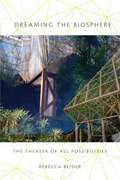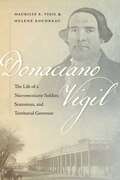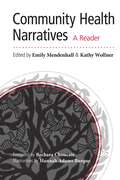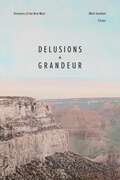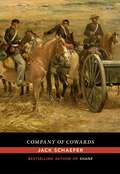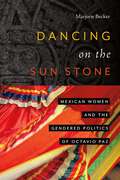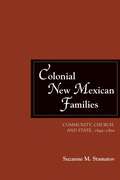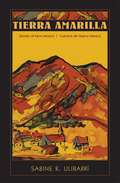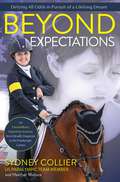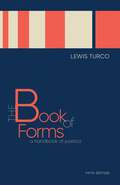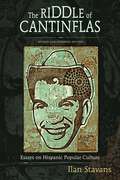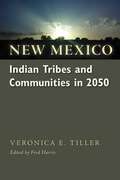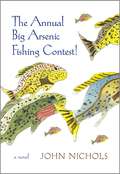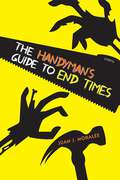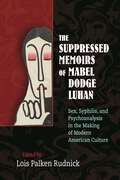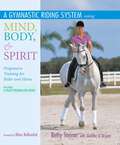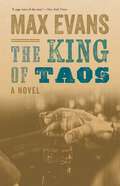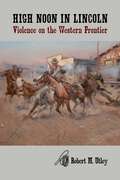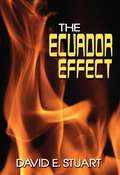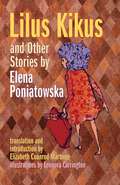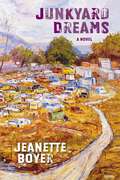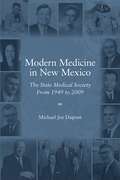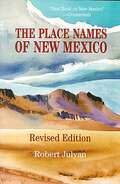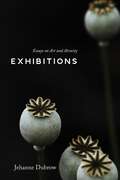- Table View
- List View
Dreaming the Biosphere: The Theater of All Possibilities
by Rebecca Reider"Biosphere 2" rises from southern Arizonas high desert like a bizarre hybrid spaceship and greenhouse. Packed with more than 3,800 carefully selected plant, animal, and insect species, this mega-terrarium is one of the world's most biodiverse, lush, and artificial wildernesses. Only recently transformed from an abandoned ghost dome to a University of Arizona research center, the site was the setting of a grand drama about humans and ecology at the end of the twentieth century. The seeds of Biosphere 2 sprouted in the 1970s at Synergia, a desert ranch in New Mexico where John Allen and a handful of dreamers united to create a self-reliant utopia centered on ecological work, study, and their traveling experimental theater troupe, "The Theater of All Possibilities." At a time of growing tensions in the American environmental consciousness, the Synergians took on varied projects around the world that sought to mend the rift between humans and nature. In 1984, they bought a piece of desert to build Biosphere 2. Eco-enthusiasts competed to become the eight "biospherians" who would lock themselves inside the giant greenhouse world for two years to live in harmony with their wilderness, grow their own food, and recycle all their air, water, and wastes.Thin and short on oxygen, the biospherians stoically completed their survival mission, but the communal spirit surrounding Biosphere 2 eventually dissolved into conflict--ultimately the facility would be seized by armed U.S. Marshals. Yet for all the story's strangeness, perhaps strangest of all was how normal Biosphere 2 actually was. The story of this grand eco-utopian adventure (and misadventure) becomes a parable about the relationship between humans and nature in postmodern America.Visit the authors' website at www.dreamingthebiosphere.com
Donaciano Vigil: The Life of a Nuevomexicano Soldier, Statesman, and Territorial Governor
by Helene Boudreau Maurilio E. VigilBorn in Santa Fe in 1802, Donaciano Vigil was an active participant in many of the critical events in New Mexico&’s history in the nineteenth century. Vigil was witness to New Mexico&’s transition from a Spanish province (1802–1821) to a Mexican department (1821–1846) and eventually to an American territory (1846–1877), and he was a key player in most of the events of that era. As a Hispano soldier and officer in the New Mexico Militia, he was instrumental in the Navajo Wars, the Rio Arriba insurrection of 1837, the Texas invasion of 1841, and the American invasion of 1846. As a Mexican statesman in New Mexico, he was one of the most active assemblymen. Following the American occupation, he joined the civil government, first as secretary, then as governor. It was in these roles that Donaciano left an enduring impact and legacy on the territory.In this gripping biography of a remarkable man, Maurilio E. Vigil and Helene Boudreau fill the gap within the scholarship on Hispanics in nineteenth-century New Mexico.
Community Health Narratives: A Reader
by Emily Mendenhall and Kathy WollnerMark struggled at school and became depressed because he was bullied. Ana Maria feared leaving her home after dark due to gun violence. Mario and his family benefited from an intervention to prevent the spread of avian flu in his village.Health problems like these affect not only individuals but also families and communities. These examples suggest how community health is realized in peoples&’ lives and affects people living in the same place who share similar beliefs and values. For example, feeling safe within one&’s community is an essential part of living a healthy life.The narratives in this book explore a wide range of topics—social ties, gender and sexuality, mental illness, violence, prevention, and health-care access—that shape community health. Featuring &“Communities in Action&” sketches describing good community health programming as well as a guide for teachers, this book, along with its companions Global Health Narratives: A Reader for Youth and Environmental Health Narratives: A Reader for Youth (UNM Press), provides a comprehensive curriculum that examines people&’s health experiences across cultures and nations.
Delusions and Grandeur: Dreamers of the New West
by Mark SundeenIn these new and selected essays, Mark Sundeen recounts two decades of political activism, outdoor exploration, and empathetic curiosity. He was both witness to and active participant in pivotal cultural and political events of the new millennium, from Howard Dean&’s presidential campaign to the Iraq War protests and the NoDAPL uprising in Standing Rock. But what brings these large phenomena into humanistic focus is the cast of idiosyncratic people he meets. Using first-person reportage, well-crafted storytelling, and wry, self-deprecating humor, Sundeen&’s keen observations illustrate what everyday life is like for people in the contemporary American West, with all their systemic precarities and individual triumphs.
I Got Mine: Confessions of a Midlist Writer
by John NicholsI Got Mine: Confessions of a Midlist Writer is the memoir of Nichols&’ extraordinary life, as seen through the lens of his writing. Everything that went into making him a writer and eventually found an outlet in his work—his education, family, wives, children, friends, enemies, politics, and place—is told from the point of view of his daily practice of writing.Beginning with his first novel, The Sterile Cuckoo, published in 1965 when he was just twenty-four, Nichols shares his highs and lows: his ambivalent relationship with money; his growing disenchantment with the hypocrisy of capitalism; and his love-hate relationship with Hollywood—including the years-long struggle of working with director Robert Redford on the film version of The Milagro Beanfield War, which was filmed around Truchas and featured many of Nichols&’ northern New Mexico neighbors.Throughout I Got Mine Nichols spins a shining thread connecting his lifelong engagement with progressive political causes, his passionate interest in and identification with ordinary people, and his deep connection to the land.
Company of Cowards
by Jack SchaeferThis classic novel of courage and redemption introduces Jared Heath. Heath, a captain in the Union army, is stripped of rank and court-martialed for cowardice after refusing to march his men into a suicide mission. Yet he has a chance to regain his honor when he is charged with leading Company Q, a unit of misfit officers also disgraced and charged with cowardice. If Heath can make them an effective fighting force, there is a possibility that all of them will be redeemed and pardoned. Will this unit of outcasts prevail and succeed when given the opportunity to show their courage, or will they find defeat deep in Comanche country?
Dancing on the Sun Stone: Mexican Women and the Gendered Politics of Octavio Paz
by Marjorie BeckerDancing on the Sun Stone is a uniquely transdisciplinary work that fuses modern Latin American history and literature to explore women&’s lives and gendered politics in Mexico. In this important work, scholar Marjorie Becker focuses on the complex Mexican women of rural Michoacán who performed an illicit revolutionary dance and places it in dialogue with Nobel Prize winner Octavio Paz&’s signature poem, &“Sun Stone&”—allowing a new gendered history to emerge.Through this dialogue, the women reveal intimate and intellectual complexities of Mexican women&’s gendered voices, their histories, and their intimate and public lives. The work further demonstrates the ways these women, in dialogue with Paz, transformed history itself. Becker&’s multigenre work reconstructs Mexican history through the temporal experiences of crucial Michoacán females, experiences that culminate in their complex revolutionary dance, which itself emerges as a transformative revolutionary language.
Colonial New Mexican Families: Community, Church, and State, 1692–1800
by Suzanne M. StamatovIn villages scattered across the northern reaches of Spain&’s New World empire, remote from each other and from the centers of power, family mattered. In this book Suzanne M. Stamatov skillfully relies on both ecclesiastical and civil records to discover how families formed and endured during this period of contention in the eighteenth century. Family was both the source of comfort and support and of competition, conflict, and even harm. Cases, including those of seduction, broken marriage promises, domestic violence, and inheritance, reveal the variabilities families faced and how they coped. Stamatov further places family in its larger contexts of church, secular governance, and community and reveals how these exchanges—mundane and dramatic—wove families into the enduring networks that created an intimate colonial New Mexico.
Tierra Amarilla: Stories of New Mexico/Cuentos de Nuevo Mexico (Pasó Por Aquí Series on the Nuevomexicano Literary Heritage)
by Sabine R. UlibarríA mysterious and majestic white stallion, an angelic but unsophisticated village priest, gossips with scathing tongues, and a blacksmith with awesome strength are among the characters that populate the charming stories of Sabine Ulibarrí.Ulibarrí, a native of Tierra Amarilla, takes the reader back into his past, inside the church and adobe homes, through the forests and fields, across mountain meadows and canyons, revealing an enduring love of the Spanish American people who come alive in this book.First published in Spanish in 1964, this classic re-release is a bilingual presentation that offers delightful reading for anyone interested in the hues of Hispanic life in northern New Mexico.&“A unique and important literary landmark--these stories penetrate the soul of a people.&”--Modern Language Journal
Beyond Expectations
by Heather Wallace Sydney CollierA memoir that captures a young athlete's battle with a devastating diagnosis and the courage and perseverance that has propelled her to the top of a Paralympic sport.For seven years, Sydney Collier enjoyed the life of a happy, active child, with caring, supportive parents and siblings. She ran through sprinklers and played with neighborhood friends. And she fell in love with four-legged animals, especially horses. Her mother encouraged her to ride, and Sydney was good at it, finding herself at home in the saddle.Then a routine eye exam changed everything.Sydney had the incredibly rare Wyburn-Mason Syndrome, a congenital birth defect that causes arteriovenous malformations where the veins and arteries in the brain don't separate as they should through capillaries. The resulting &“clumps&” of veins and arteries have increased blood flow and a high risk of aneurysm, and they tend to affect the brain, eye, and facial structures. Fewer than 100 cases of Wyburn-Mason Syndrome have been reported, according to the National Institute of Health, and its rarity means treatment remains controversial and prognosis uncertain. Most diagnoses in infants have been confirmed by pathologists after death.Wyburn-Mason began to take an immediate toll on Sydney's body, first with its effect on her vision, and soon severe physical debilitation and excruciating migraines. Over the next eight years, as she and her family tried treatment after treatment, seeking some sort of hope, the only place where Sydney could escape the almost-constant pain for just a little while was on the back of a horse.During a risky brain surgery in 2009, Sydney suffered a devastating and massive stroke, which inflicted a new level of disability, putting her in a wheelchair. Determined to ride horses again, Sydney entered a rehabilitation center and refused to give up on her goal of one day riding at the high-performance level for the United States. A year later, on a trip with her mother to the World Equestrian Games in Kentucky, Sydney had a chance to watch the sport of Para Dressage, and that moment helped finally turn what seemed an overwhelming tide of loss and suffering. A new goal was born: to become a competitor in the Paralympics, and to do it in partnership with the only thing that brought her peace and happiness—horses.This is the story of a brave young woman's journey from the doctors' offices to medal podiums, in her words. Anyone looking for a reason to believe that dreams can be realized, regardless of the odds, will find motivation in these pages.
The Book of Forms: A Handbook of Poetics, Fifth Edition
by Lewis TurcoNow in its fifth edition, The Book of Forms: A Handbook of Poetics continues to be the go-to reference and guide for students, teachers, and critics. A companion for poets from novice to master, The Book of Forms has been called &“the poet&’s bible&” for more than fifty years. Filled with both common and rarely heard of forms and prosodies, Turco&’s engaging style and apt examples invite writers to try their hands at exploring forms in ways that challenge and enrich their work. Revised for today&’s poet, the fifth edition includes the classic rules of scansion and the useful Form-Finder Index alongside new examples of terms and prose that are essential to the study of all forms of poetry and verse. As Turco writes in the introduction, &“It should go without saying that the more one knows how to do, the more one can do.&”
The Riddle of Cantinflas: Essays on Hispanic Popular Culture, Revised and Expanded Edition
by Ilan StavansIlan Stavans&’s collection of essays on kitsch and high art in the Americas makes a return with thirteen new colorful conversations that deliver Stavans&’s trademark wit and provocative analysis. &“A Dream Act Deferred&” discusses an issue that is at once and always topical in the dialogue of Hispanic popular culture: immigration. This essay generated a vociferous response when first published in The Chronicle of Higher Education as the issue of immigration was contested in states like Arizona, and is included here as a new addition that adds a rich layer to Stavans&’s vibrant discourse. Fitting in this reconfiguration of his analytical conversations on Hispanic popular culture is Stavans&’s &“Arrival: Notes from an Interloper,&” which recounts his origins as a social critic and provides the reader with interactive insight into the mind behind the matter.Once again delightfully humorous and perceptive, Stavans delivers an expanded collection that has the power to go even further beyond common assumptions and helps us understand Mexican popular culture and its counterparts in the United States.
New Mexico Indian Tribes and Communities in 2050
by Veronica E. TillerIn this E-short edition from New Mexico 2050, Veronica E. Tiller—a Jicarilla Apache who is the editor and publisher of the renowned reference guide Tiller&’s Guide to Indian Country—surveys the history and present-day roles of Indian tribes in New Mexico. Considering the key issues impacting Native Americans—including climate change, water resources, energy development, education, and health—Tiller reveals what New Mexicans can do to ensure a more satisfying and rewarding future for all.
The Annual Big Arsenic Fishing Contest!: A Novel
by John NicholsOn the surface this book spins a fisherman&’s tall tale about a ribald angling contest between three middle-aged friends who love (and perhaps hate) each other: a preppy trilingual Machiavelli, an intellectual ghetto pool shark, and a brawny Texan who defies his own macho stereotype. All professional writers, the men have met every autumn for eighteen years at the Big Arsenic Springs on the Río Grande to fly-cast for trout and argue about life, literature, marriage, and eco-Armageddon. Their escapades reveal a spirited paean to a beautiful river gorge, and also a poignant cautionary fable about male friendship and cutthroat competition. As aging cripples them all, tragedy mars the tournament. In this insightful and bittersweet love story, masterful storyteller John Nichols brings to life northern New Mexico and three unforgettable characters.
The Handyman's Guide to End Times: Poems (Mary Burritt Christiansen Poetry Series)
by Juan J. MoralesIn Morales&’s newest collection, an imagined zombie apocalypse intertwines with personal narrative. From zombie dating to the sin of popcorn ceilings, these poems investigate the nature of impermanence while celebrating the complexities of life.
The Suppressed Memoirs of Mabel Dodge Luhan: Sex, Syphilis, and Psychoanalysis in the Making of Modern American Culture
by Lois Palken RudnickInternationally known as a writer, hostess, and patron of the arts of the twentieth century, Mabel Dodge Luhan (1879–1962) is not known for her experiences with venereal disease, unmentioned in her four-volume published memoir. Making the suppressed portions of Luhan&’s memoirs available for the first time, well-known biographer and cultural critic Lois Rudnick examines Luhan&’s life through the lenses of venereal disease, psychoanalysis, and sexology. She shows us a mover and shaker of the modern world whose struggles with identity, sexuality, and manic depression speak to the lives of many women of her era.Restricted at the behest of her family until the year 2000, Rudnick&’s edition of these remarkable documents represents the culmination of more than thirty-five years of study of Luhan&’s life, writings, lovers, friends, and Luhan&’s social and cultural milieus in Italy, New York, and New Mexico. They open up new pathways to understanding late Victorian and early modern American and European cultures in the person of a complex woman who led a life filled with immense passion and pain.
Gymnastic Riding System Using Mind, Body, & Spirit
by Betsy SteinerA multifaceted training system for riders and horses of all levels. Most books discuss the physical aspects of riding: horse position, rider position, use of aids, schooling exercises, and movements. Betsy Steiner, however, an international rider and trainer, believes that the physical is just one-third of the riding equation, and that two equally important vital components—the intellectual and the psychological—are often ignored. Her approach to riding and training is to use the body, mind, and spirit, all working together to create a rich experience she call gymnastic training that addresses horse and rider as the three-dimensional beings that they are. This training system is geared toward maintaining proper form and alignment—crucial for human and equine athletes alike. Progress is achieved by use of inventive gymnastic schooling exercises for the horse, and a tailored program of Pilates exercises enabling the rider to become athletic, lithe, energetic, and flexible.
The King of Taos: A Novel
by Max EvansWinner of the 2021 Western Heritage Award for Outstanding Western Novel Max Evans' wit and humanity sparkle in the guise of a humorous cast of characters set in the underworld of Taos, New Mexico, in the 1950s.The underground world of con men, winos, prostitutes, laborers, and artists has been an abundant source of material for great writers from Dickens to Bukowski. The underground world of Taos, New Mexico, is no different. In the late 1950s this mountain town was higher, brighter, poorer, and farther removed than London, Paris, or Los Angeles, but it was every bit as rich for the explorations of a young writer. Max Evans, the beloved New Mexican writer of such enduring classics of Western fiction as The Rounders and The Hi-Lo Country, returns to form with The King of Taos. Set in the late 1950s, the novel tells the stories of sharp-witted Zacharias Chacon, aspiring artist Shaw Spencer, and a circle of characters who drink, fight, love, argue, and—mostly—talk. Readers will enjoy this witty and moving evocation of unforgettable characters as they look for work, love, comfort, dignity, and bottomless oblivion.
High Noon in Lincoln: Violence on the Western Frontier
by Robert M. UtleyHere is the most detailed and most engagingly narrated history to date of the legendary two-year facedown and shootout in Lincoln. Until now, New Mexico's late nineteenth-century Lincoln County War has served primarily as the backdrop for a succession of mythical renderings of Billy the Kid in American popular culture. In research, writing, and interpretation, High Noon in Lincoln is a superb book. It is one of the best books (maybe the best) ever written on a violent episode in the West.--Richard Maxwell Brown, author of Strain of Violence: Historical Studies of American Violence and Vigilantism A masterful account of the actual facts of the gory Lincoln County War and the role of Billy the Kid. . . . Utley separates the truth from legend without detracting from the gripping suspense and human interest of the story.--Alvin M. Josephy, Jr.
The Ecuador Effect
by David E. StuartMay 1970, freelance human rights investigator John Alexander rides on horseback, away from the scene of his latest mission. Flames engulf the second story of the Hacienda Atalaya in southern Ecuador's Santa Isabel district that Alexander and a local named Efraín have just set ablaze. Their arson is not just a typical job in Alexander's "human rights" campaign. It is a symbolic burning of the powerful Veintimita clan's shady politics and exploitation of the local peasantry. A hired snitch who has investigated the international sex trade, agribusiness scandals, shady elections, and political murders for various foundations' boards, Alexander is a single guy with two American passports, a British residency card, a master's degree in folklore from Edinburgh, and an attitude. Dark and fast-paced, The Ecuador Effect combines a liberal dose of Ecuadorian/Quechua Indian culture with the drama of a novel. David Stuart fictionalizes major events he witnessed while doing anthropological fieldwork in Ecuador and shares the real-life struggles of the cholos, the mestizos, and the indios in their attempts to maintain their working-class livelihoods in a strikingly stratified society that pushes them out of their traditional settlements.PEN Southwest 2007 fiction finalist
Lilus Kikus and Other Stories by Elena Poniatowska
by Elena PoniatowskaElena Poniatowska is recognized today as one of Mexico's greatest writers. Lilus Kikus, published in 1954, was her first book. However, it was labeled a children's book because it had a young girl as protagonist, it included illustrations, and the author was an unknown woman. Lilus Kikus has not received the critical attention or a translation into English it deserved, until now. Accompanying Lilus Kikus in this first American edition are four of Poniatowska's short stories with female protagonists, only one of which has been previously published in English.Poniatowska is admired today as a feminist, but in 1954, when Lilus Kikus appeared, feminism didn't have broad appeal. Twenty-first-century readers will be fascinated by the way Poniatowska uses her child protagonist to point out the flaws in adult society. Each of the drawings by the great surrealist Leonora Carrington that accompany the chapters in Lilus Kikus expresses a subjective, interiorized vision of the child character's contemplations on life. A tantalizingly complex feminist author, whose importance and originality have yet to be appreciated in this country.--Cynthia Steele, author of Politics, Gender, and the Mexican Novel, 1968-1988
Junkyard Dreams: A Novel
by Jeanette BoyerRita Vargas owns an automobile junkyard outside of Santa Fe. Her property abuts a hill with a spectacular view, making the junkyard a magnet for ubiquitous developers. But Rita's land has been in her family for generations, and she doesn't want to sell. Also, her son Parker, a talented artist, uses salvaged pieces from the junkyard for his sculptures. Local wheeler-dealer Leroy Sena has already bought the ridge above Rita's property, and when Leroy sells that land to a small-time landlord and his gallery-owner sweetheart, the stakes are raised.In Junkyard Dreams, old-timers retaining their emotional ties to the land face newcomers with money who want to build on every hilltop. This first novel illustrates that for every person opposed to the rapid growth of the real estate bonanza, two more people are scheming on how to profit from the boom. This seriously political but realistically compelling portrayal of land conflict confronts the trade-offs between improvement and preservation.Two roadrunner thumbs up for this engaging and wonderfully crafted novel that honors the land and its people.--Rudolfo Anaya&”I actually know my way around a junkyard--and so does Boyer. She also knows her way around real estate, the rapidly changing face of small western cities, and how insoluble conflicts can erupt between perfectly nice people, changing their lives forever.--Lisa Lenard-Cook, author of Dissonance and Coyote Morning (UNM Press)
Modern Medicine in New Mexico: The State Medical Society from 1949 to 2009
by Michael Joe DupontSixty years ago, modern medicine finally made its way to New Mexico. As World War II wound down, the state was a quaint backwater filled with aging quacks, Grade C medical graduates, and a vest-pocket professional organization. A group of young-gun doctors and an ex-Marine from Oklahoma changed all that. The state boomed with postwar specialists and patients seeking the sun, and the New Mexico Medical Society (NMMS) quarterbacked the sea changes in state health care. At any number of tipping points--physician shortages, malpractice nightmares, and the crisis of managed care--the state Society played a pivotal role.Based upon archival research and extended interviews with more than fifty past presidents of the NMMS, this volume issued in 2010 describes how the New Mexico Chapter of the American Academy of Family Physicians became a national leader on medical-legal matters, clinical prevention, and continuing education. Rich with anecdotal detail, this work uses the careers of physician-leaders as a prism to present the evolution of state medicine from World War II into the new millennium.
The Place Names of New Mexico
by Robert JulyanThe Place Names of New Mexico is an invaluable guide to the state's geography and history. It explains more than 7,000 names of features large and small throughout the state--towns, mountains, rivers, canyons, counties, post offices, and even abandoned settlements--as well as providing relevant information about location, history, and current status. The revised edition contains more than fifty expanded and updated entries. The accounts are also journeys into New Mexico's past, offering glimpses of the lives and values of the people who named the place. Humor, tragedy, mystery, and daily life--they can all be found in this book.
Exhibitions: Essays on Art and Atrocity
by Jehanne DubrowWhat happens when beauty intersects with horror? In her newest nonfiction collection, Jehanne Dubrow interrogates the ethical questions that arise when we aestheticize atrocity. The daughter of US diplomats, she weaves memories of growing up overseas among narratives centered on art objects created while working under oppressive regimes. Ultimately Exhibitions is a collection concerned with how art both evinces and elicits emotion and memory and how, through the making and viewing of art, we are—for better or for worse—changed.
